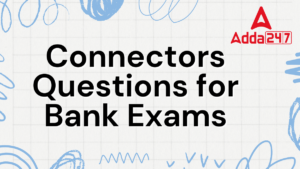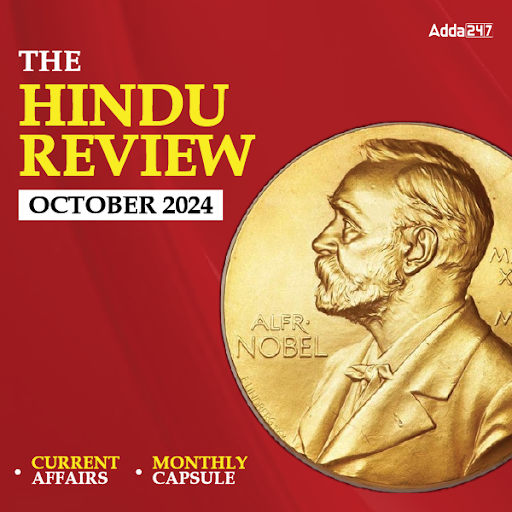Directions (1–5): Rearrange the following five sentences (A), (B), (C), (D) and (E) in the proper sequence to form a meaningful paragraph and then answer the questions given below.
(A) Aristotle begins his treatise on metaphysics with the assertion that all human beings have the desire to acquire knowledge.
(B) As evidence, Aristotle cites the delight that we take in sense perception, and in particular, in vision.
(C) By this, he means that we value knowledge for its own sake, entirely apart from its utility.
(D) His teacher, Plato, expressed the delight in vision in a still more radical way in the Symposium by attributing it to a demonic force, Eros.
(E) The sense that discriminates the largest number of intelligible forms.
Q1. Which of the following should be the first sentence of the given paragraph?
(a) A
(b) B
(c) C
(d) D
(e) E
Q2. Which of the following should be the Second sentence of the given paragraph?
(a) A
(b) B
(c) C
(d) D
(e) E
Q3. Which of the following should be the Third sentence of the given paragraph?
(a) A
(b) B
(c) C
(d) D
(e) E
Q4. Which of the following should be the Fourth sentence of the given paragraph?
(a) A
(b) B
(c) C
(d) D
(e) E
Q5. Which of the following should be the Fifth sentence of the given paragraph?
(a) A
(b) B
(c) C
(d) D
(e) E
Directions (6–10): Rearrange the following five sentences (A), (B), (C), (D) and (E) in the proper sequence to form a meaningful paragraph and then answer the questions given below.
(A) There is so much disagreement about the correct sense of Holy Scripture that the claim that this sense is manifest is itself an interpretation, and so subject to rejection.
(B) Prophets, preachers, and scholars alike, all attempt to derive the genuine will of God from the revealed text.
(C) The commands of God, that is, the contents of divine revelation, are sufficiently ambiguous that they require interpretation.
(D) But this distinction cannot be unambiguously preserved, for a very simple reason.
(E) We seem to have arrived at a sharp distinction between philosophy and religion.
Q6. Which of the following should be the Second sentence of the given paragraph?
(a) A
(b) B
(c) C
(d) D
(e) E
Q7. Which of the following should be the Fifth sentence of the given paragraph?
(a) A
(b) B
(c) C
(d) D
(e) E
Q8. Which of the following should be the Third sentence of the given paragraph?
(a) A
(b) B
(c) C
(d) D
(e) E
Q9. Which of the following should be the first sentence of the given paragraph?
(a) A
(b) B
(c) C
(d) D
(e) E
Q10. Which of the following should be the Fourth sentence of the given paragraph?
(a) A
(b) B
(c) C
(d) D
(e) E
Directions (11-15): Each question has a word followed by five choices. From among the choices, identify the word which is opposite in meaning (antonym) to the main word and mark its number as your answer.
Q11. INDELIBLE
(a) temporary
(b) decorous
(c) surprising
(d) concerted
(e) enduring
Q12. EXPEDIENT
(a) beneficial
(b) necessary
(c) harmful
(d) relevant
(e) imprudent
Q13. DUCTILE
(a) opaque
(b) tensile
(c) coarse
(d) soft
(e) brittle
Q14. ADEPT
(a) skilled
(b) inept
(c) ugly
(d) serene
(e) adroit
Q15. CATALYST
(a) promoter
(b) assassin
(c) destroyer
(d) deterrent
(e) succor
Solutions
S1. Ans.(a)
Sol. The correct order of the sentences of the given paragraph will be – ACBED
S2. Ans.(c)
Sol. The correct order of the sentences of the given paragraph will be – ACBED
S3. Ans.(b)
Sol. The correct order of the sentences of the given paragraph will be – ACBED
S4. Ans.(e)
Sol. The correct order of the sentences of the given paragraph will be – ACBED
S5. Ans.(d)
Sol. The correct order of the sentences of the given paragraph will be – ACBED
S6. Ans.(d)
Sol. The correct order of the sentences of the given paragraph will be – EDCAB
S7. Ans.(b)
Sol. The correct order of the sentences of the given paragraph will be – EDCAB
S8. Ans.(c)
Sol. The correct order of the sentences of the given paragraph will be – EDCAB
S9. Ans.(e)
Sol. The correct order of the sentences of the given paragraph will be – EDCAB
S10. Ans.(a)
Sol. The correct order of the sentences of the given paragraph will be – EDCAB
S11. Ans.(a)
Sol. INDELIBLE-(of ink or a pen) making marks that cannot be removed.
S12. Ans.(e)
Sol. EXPEDIENT-(of an action) convenient and practical although possibly improper or immoral.
S13. Ans.(e)
Sol. DUCTILE-able to be deformed without losing toughness; pliable, not brittle.
S14. Ans.(b)
Sol. ADEPT-very skilled or proficient at something.
S15. Ans.(d)
Sol. CATALYST-a substance that increases the rate of a chemical reaction without itself undergoing any permanent chemical change.





 Connectors Questions for Bank Exams
Connectors Questions for Bank Exams
 Sentence Rearrangement Questions for Ban...
Sentence Rearrangement Questions for Ban...
 Word Swap Questions for Bank Exams
Word Swap Questions for Bank Exams




